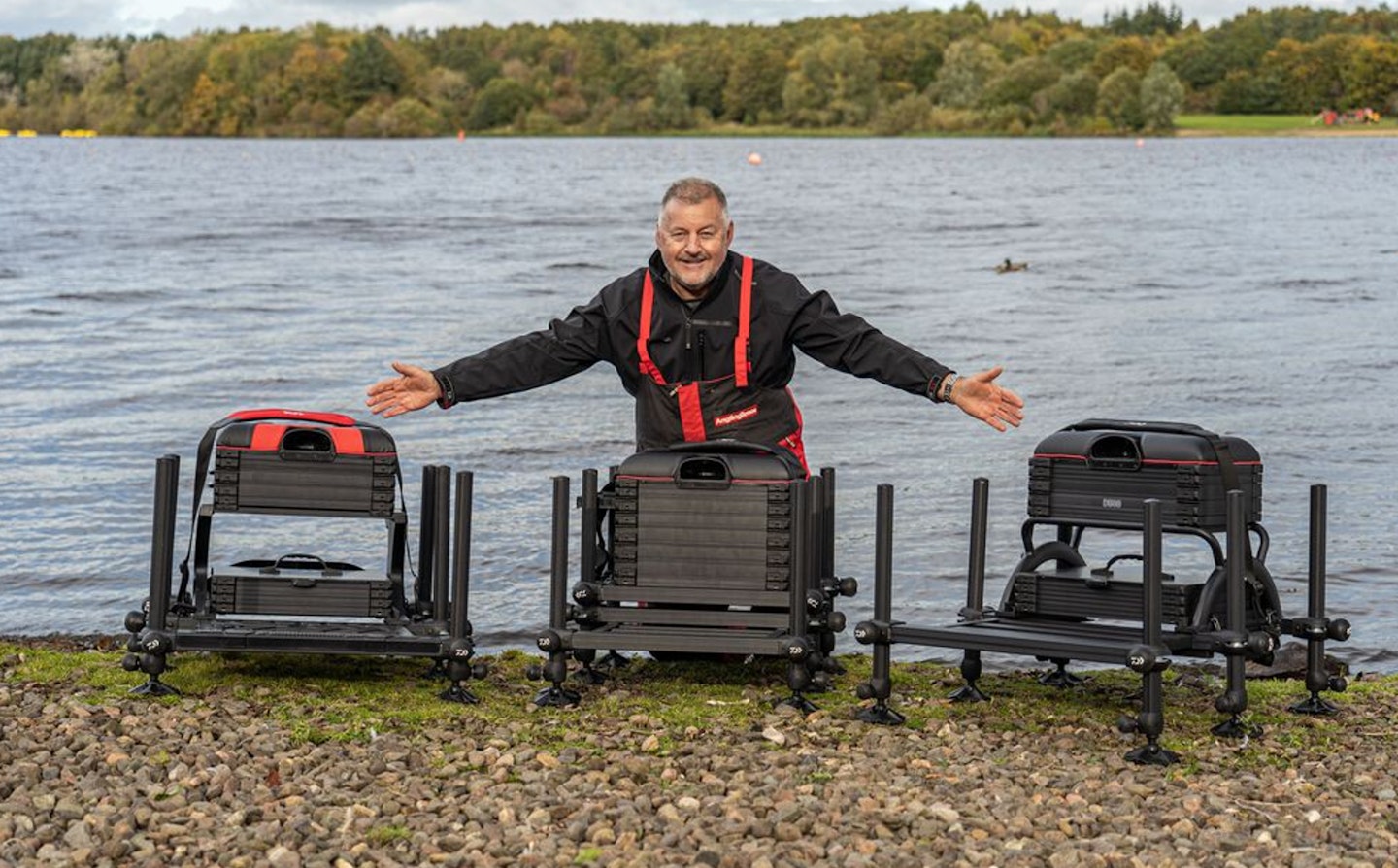Buying a new seatbox can be daunting, given the sheer number on the market, but follow this guide and you won’t go far wrong.
Questions will need answering before you part with the money for such a pricey item. You’ll most likely be sat on it for years to come, so it has to be right.
Think about what type of box will best suit your fishing needs, what drawer and tray configuration is right, and even whether it will fit on your barrow! Most important of all, a new box must be comfortable to sit on and strong enough to not give way midway through a session.
With all this in mind, Angling Times tackle editor Mark Sawyer has put together 10 key things to look for before you splash the cash on a brand-new box...
Will it fit your body shape?
Ideally, with your feet resting squarely on the footplate, your thighs should be horizontal. If your legs are sloping forward, the box is a little too high for you, and unless you can remove trays or drawers from beneath the seat, you’re likely to get backache when fishing with the long pole if the box height isn’t spot-on.
Is it comfy?
Look for a comfortable seat – you’re likely to be spending upwards of five hours sitting down! Quality memory foams and gels have added longevity to most seatbox seats. Choose one that’s firm but comfy, with no corner stitching. Nearly all box seats feature a pole support in the middle, but it’s not really needed unless you’re fishing running water, when it helps to keep the pole completely still.
Well built?
Try before you buy! Extend the legs, tighten the leg blocks and sit down. Then, ease yourself back, moving your weight to the rear of the seat.
If the legs slip, they’re sure to do so when you’re fishing, so make sure they don’t move. Next, step on to the very front of the footplate – the box shouldn’t tip forward. If it does, then you’re nailed on for a swim at some point in the near future.
Perfect legs
For my money, round legs are the most stable and are easier to get on with than square-sectioned legs. They also let you use accessories such as feeder arms, side trays and utility bars made by almost every company. Square legs, it seems, are a thing of the past. The two most popular round leg diameters are 30cm and 36cm, the latter being that bit better if you’re big! No matter what size box legs you choose, they should always come with swivelling mudfeet too.
Drawers, units and trays
Front-facing drawers are great for storing smaller tackle items, but make sure you can open them without having to get off the box. Best of all are side or cross drawers, far easier to use than front drawers. Try to pick a box whose drawers come with self-fitting spacers or dividers. Left-handed? Ensure there are either full cross drawers or that the unit can be turned around so the drawers can open from the left.
Adjustable height
Can you adjust the seating height of the box upwards? The simple answer should be ‘yes’ as long as the top module of trays and drawers can be fitted with extras that add to the total height of the box. Seatboxes with single, deep bases are best suited to higher top units, as they tend not to be top-heavy. Otherwise you run the risk of the box tipping over when you pick it up by the shoulder strap.

Horses for courses
You can use the same seatbox for both natural and commercial fisheries, although venues where you need to sit out on a platform in the water best lend themselves to a seatbox with an easily removable footplate system. If you’re fishing from a platform positioned out from the bank, a footplate can actually be more of a hindrance than a help.
Footplate or not?
Without a doubt you should look for a seatbox with a decent non-slip footplate. The best systems simply slide out from under the front of the box and are easy to set up, allowing you to sit comfortably on any type or level of terrain. Because nearly all banks slope towards the water your footplate, like the front legs of your seatbox, should come ready fitted with telescopic legs to enable you to get the box on a totally level footing.
What's the damage?
Cut your cloth according to your budget – you won’t need a top-of-the-range carbon box if you’re just getting into fishing. If you fish mainly natural venues, look for a seatbox with a deeper single tray set-up. This can be used to store float and feeder boxes as well as spare reels. If you lean more towards commercial fisheries, get a box with two or three winder trays, or a modular stacking system that will allow you to tailor your rig trays to suit. There are plenty of really good seatboxes with deep trays or added pole winder trays available for under £400.
Will it see me out?
Look after your seatbox and there’s no reason why it shouldn’t last you for many years. Get into the habit of swilling off the footplate with a few bait boxes full of water every time you pack up and you’ll keep the runners free from damaging grit and debris. Give side leg blocks and telescopic leg systems the odd squirt of WD40, and wash mud off the legs so that they are always easy to adjust smoothly. Every now and again, check behind all your drawers to make sure hook packets and things aren’t stuck across the closure magnets or in the runners. Basically, look after your seatbox and it will look after you.
